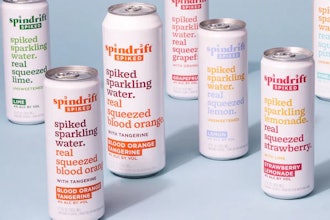
The company that owns KFC and Taco Bell posted better-than-expected sales in the second quarter thanks to stronger customer demand and a record new store building spree.
Yum Brands built 603 net new stores during the quarter, including 522 KFC outlets in 62 countries.
As a result of the strong quarter, the company raised its outlook for new store growth from 4% to between 4% and 5% in 2021 and 2022. CEO David Gibbs said the pace of store openings reflected the health of the company's brands coming out of the pandemic.
“When our unit economics are good, it’s an attractive proposition for our franchisees to build,” Gibbs said in a conference call with investors Thursday. Worldwide, 98% of Yum's restaurants are owned by franchisees.
Revenue for the Louisville, Kentucky, company rose 34% in the April-June period to $1.6 billion. That was ahead of Wall Street’s forecast of $1.48 billion, according to analysts polled by FactSet.
Gibbs also noted a sharp increase in digital sales, including online orders for pickup and delivery. Digital orders grew 35% year-over-year to $5 billion.
Digital orders save on labor costs and ensure more seamless service, Gibbs said, and customers ordering online also tend to order more.
“Digital is one of those things that have no downside,” he said.
To facilitate that growth, Yum agreed to acquire Dragontail, an Autralian tech company, in May. Dragontail’s platform helps manage kitchen orders and dispatch delivery drivers; the deal is expected to close by the end of the third quarter. Yum now offers delivery from more than 70% of its stores globally.
Yum’s scale __ with more than 50,000 restaurants worldwide __ is helping blunt the impact of higher commodity prices, Gibbs said. But he said U.S. franchisees have made “moderate” price increases to account for higher labor costs.
Restaurants have been struggling to hire enough workers as the pandemic eases and demand soars. On Wednesday, Yum rival McDonald's said it has raised pay for U.S. workers by 5% this year.
Same-store sales, or sales at locations open at least a year, jumped 23%, which was higher than Wall Street expected. Last year, the company’s same-sales dropped 15% in the second quarter as the pandemic slowed customer traffic.
Same-store sales also rose compared to 2019 levels. But on that basis the numbers were more uneven, with stronger results in the U.S. where more outlets have fully reopened.
KFC U.S. same-store sales jumped 19% compared to 2019 levels, for example, but international KFC same-store sales fell 1%. The company said 2% of its international stores remained temporarily closed due to virus restrictions at the end of June.
Yum China Holdings, a separate company that reported results Wednesday, said it had to close or restrict service at 400 restaurants in southern China in late May due to a coronavirus outbreak.
Similarly, Pizza Hut’s U.S. same-store sales rose 9% compared to 2019, while international same-store sales were down 6%.
Net income rose 89% to $391. Adjusted for one-time items, the company earned $1.16 per share. That was also ahead of analysts’ forecast of 96 cents.
Yum Brands shared rose 6% to $129.82 in afternoon trading.
Yum’s results came the day after McDonald’s reported a big rebound in the second quarter. McDonald’s said its global same-store sales jumped 40.5% in the April-June period.






















